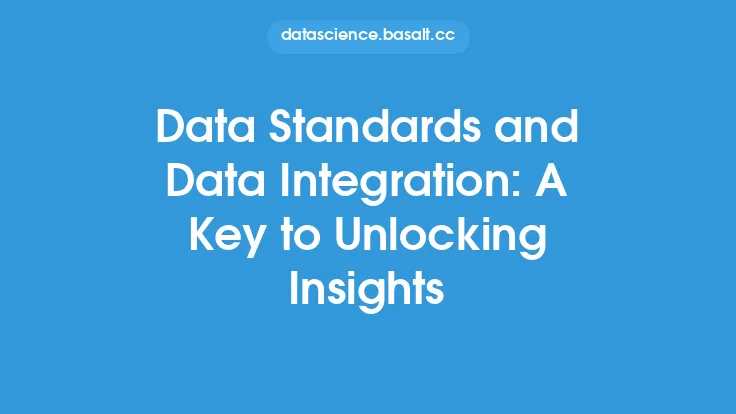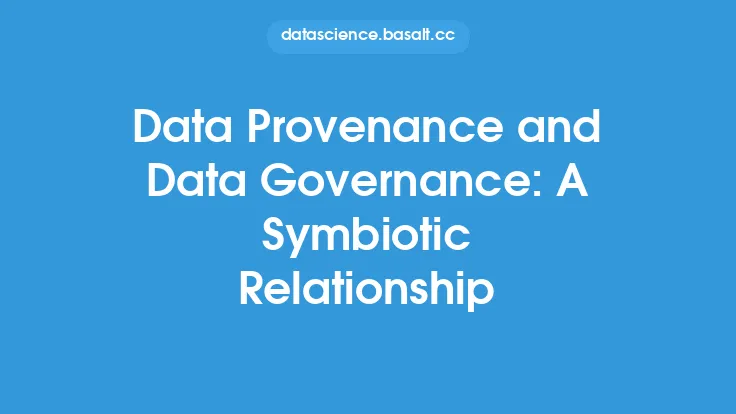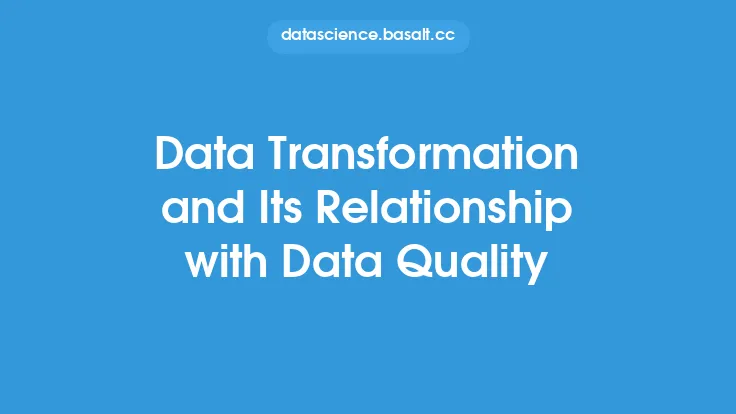Data integration is a crucial process in the data engineering landscape, as it enables organizations to combine data from multiple sources into a unified view, facilitating informed decision-making and driving business success. However, the effectiveness of data integration depends on the quality of the data being integrated. Data quality refers to the accuracy, completeness, consistency, and reliability of the data, and it plays a vital role in ensuring that the integrated data is trustworthy and useful. In this article, we will delve into the critical relationship between data integration and data quality, exploring the importance of data quality in data integration, the challenges of ensuring data quality, and the strategies for maintaining high-quality data throughout the integration process.
Introduction to Data Quality
Data quality is a multifaceted concept that encompasses various aspects, including accuracy, completeness, consistency, and reliability. High-quality data is essential for making informed decisions, as it provides a reliable foundation for analysis and insights. In the context of data integration, data quality is critical because it directly impacts the accuracy and reliability of the integrated data. Poor data quality can lead to incorrect or incomplete data, which can have far-reaching consequences, including flawed decision-making and compromised business outcomes.
The Impact of Data Quality on Data Integration
Data quality has a significant impact on the data integration process. When data is of high quality, it can be easily integrated, transformed, and loaded into a target system, providing a unified view of the data. On the other hand, poor data quality can hinder the integration process, leading to errors, inconsistencies, and inaccuracies. For instance, if the data is incomplete or inconsistent, it may not be possible to match records across different systems, resulting in duplicate or missing data. Similarly, if the data is inaccurate, it can lead to incorrect analysis and insights, compromising the decision-making process.
Challenges in Ensuring Data Quality
Ensuring data quality is a challenging task, especially in the context of data integration. Some of the common challenges include:
- Data inconsistencies: Data inconsistencies can arise due to differences in data formats, structures, and semantics across different systems.
- Data duplicates: Data duplicates can occur when the same data is stored in multiple systems, leading to inconsistencies and inaccuracies.
- Data inaccuracies: Data inaccuracies can result from human errors, system errors, or data entry mistakes.
- Data completeness: Data completeness is a challenge when data is missing or incomplete, making it difficult to integrate and analyze.
Strategies for Maintaining High-Quality Data
To maintain high-quality data throughout the integration process, several strategies can be employed:
- Data profiling: Data profiling involves analyzing the data to identify patterns, inconsistencies, and inaccuracies.
- Data validation: Data validation involves checking the data against a set of rules and constraints to ensure accuracy and consistency.
- Data cleansing: Data cleansing involves correcting errors, filling in missing values, and transforming data into a consistent format.
- Data standardization: Data standardization involves establishing a common format and structure for the data, ensuring consistency across different systems.
- Data governance: Data governance involves establishing policies, procedures, and standards for data management, ensuring that data is accurate, complete, and consistent.
Technical Approaches to Data Quality
Several technical approaches can be employed to ensure data quality, including:
- Data quality tools: Data quality tools, such as data profiling and data validation tools, can be used to identify and correct data errors.
- Data integration platforms: Data integration platforms, such as ETL (Extract, Transform, Load) tools, can be used to integrate and transform data, ensuring consistency and accuracy.
- Data warehouses: Data warehouses can be used to store and manage large amounts of data, providing a centralized repository for data integration and analysis.
- Big data technologies: Big data technologies, such as Hadoop and Spark, can be used to process and analyze large amounts of data, providing insights and patterns that can inform data quality initiatives.
Best Practices for Data Quality
To ensure high-quality data, several best practices can be employed:
- Establish data governance policies: Establishing data governance policies and procedures can help ensure that data is accurate, complete, and consistent.
- Use data quality metrics: Using data quality metrics, such as data accuracy and completeness metrics, can help identify areas for improvement.
- Implement data validation: Implementing data validation rules and constraints can help ensure that data is accurate and consistent.
- Use data profiling: Using data profiling techniques can help identify patterns, inconsistencies, and inaccuracies in the data.
- Continuously monitor data quality: Continuously monitoring data quality can help identify areas for improvement and ensure that data remains accurate and reliable over time.
Conclusion
In conclusion, data quality is a critical aspect of data integration, and ensuring high-quality data is essential for making informed decisions and driving business success. By understanding the challenges of ensuring data quality and employing strategies for maintaining high-quality data, organizations can ensure that their data integration initiatives are successful and provide a reliable foundation for analysis and insights. By leveraging technical approaches, such as data quality tools and data integration platforms, and following best practices, such as establishing data governance policies and using data quality metrics, organizations can maintain high-quality data throughout the integration process, providing a solid foundation for data-driven decision-making.





